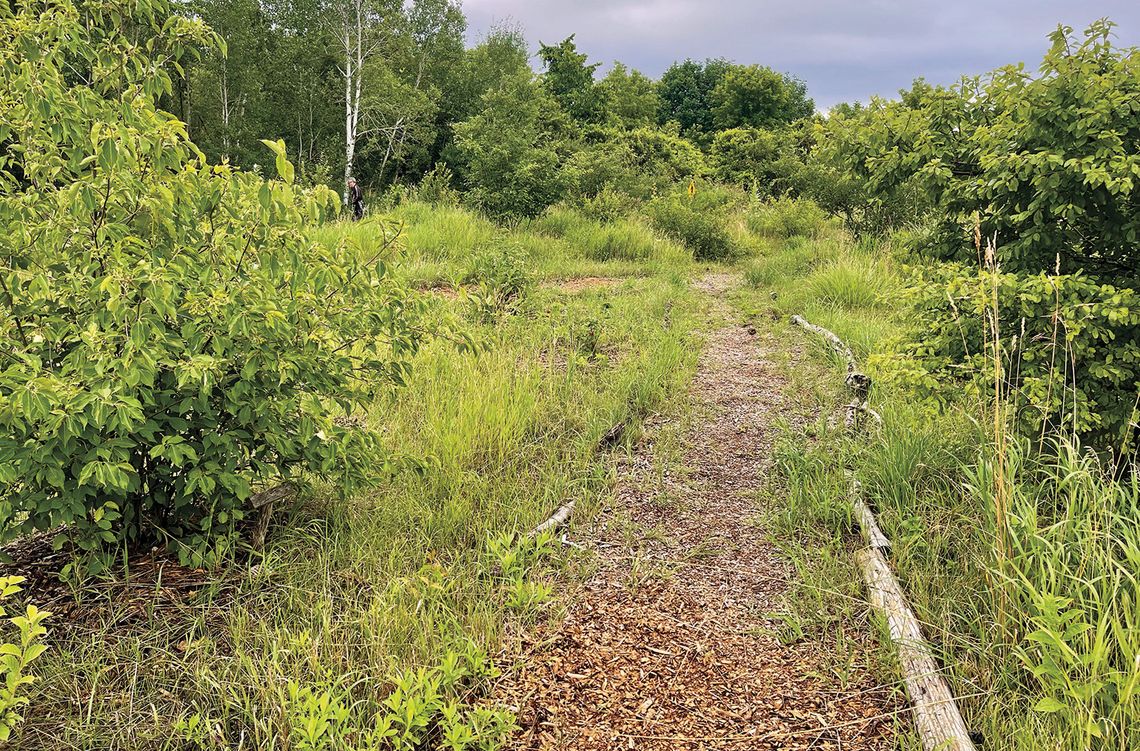The trails and natural areas of Leelanau County are filled with eye-catching scenery all yearlong, but perhaps one of the most interesting parts about the land are the plants, flowers, insects, and animals that inhabit it.
Leelanau Conservancy Land Steward Emily Douglas said depending on where you’re hiking in terms of habitat type, such as the sand dunes, forests, or wetland properties, people can find everything from common plant species to endangered and invasives that frequent areas. The forest already had its show of spring ephemeral flowers, but hikers might still have a chance to view harebells, which are little purple flowers that resemble a bell-like shape. Mints of all varieties frequent the forests as well as plants like bluestem goldenrods.
At this time of year, Douglas said she likes to step away from the forests and tries to go to the wetland properties where plants are more likely to be full and blooming. Swamp rose, cardinal flower, more mints, swamp milkweed, and black elderberry are just some of the plants that walkers might come across this month.



